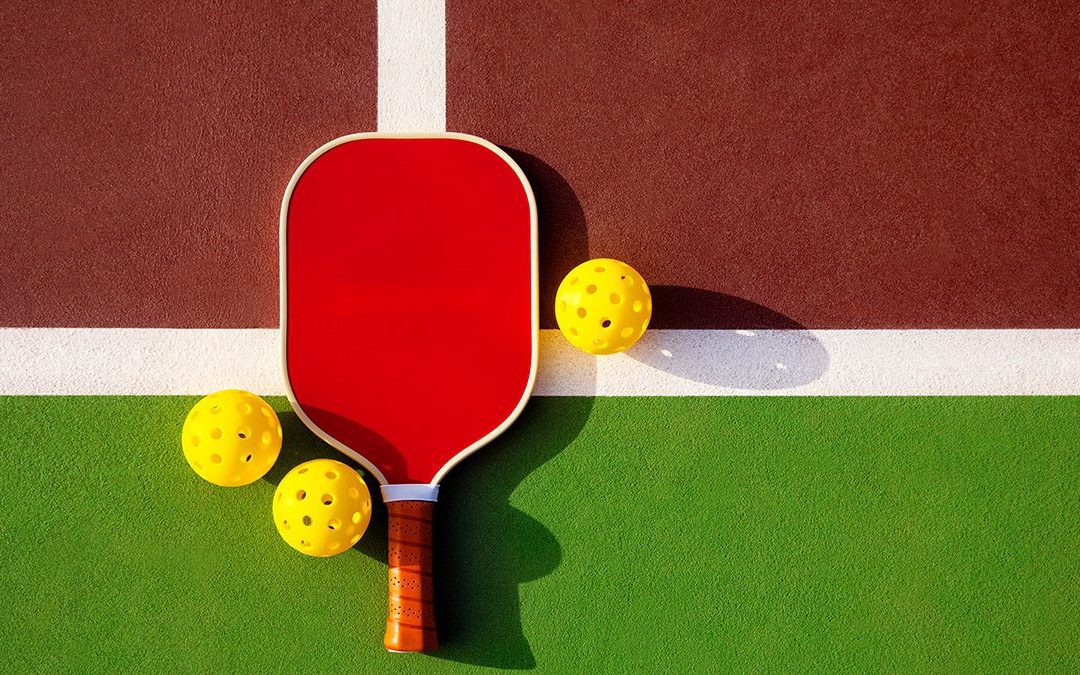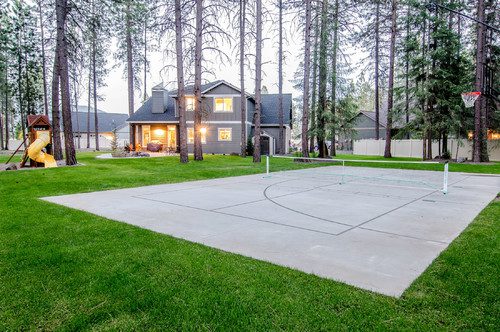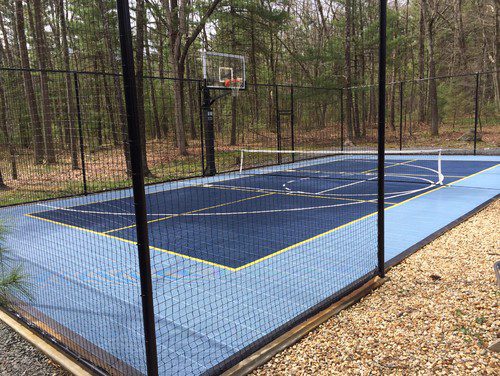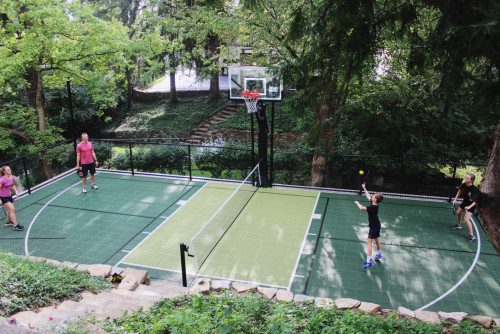Thinking About Building a Pickleball Court? Here’s What You Need To Know About Adding This Hot Amenity: MABA Massachusetts HomeOwner RealEstate
Your sister’s suddenly obsessed with it, your neighbors have formed a league, and kids are even playing it in gym class. Yup, we’re talking about pickleball. This fast-growing sport a mashup of tennis and pingpong has legions of fans. In fact, according to USA Pickleball, 4.8 million Americans play the paddle sport and the sport has enjoyed double digit growth every year for the past five years.
“The game is fun, social, easy to learn,” says Stu Upson, USA Pickleball CEO. “And it uses inexpensive equipment you can pick up at a sporting goods store.” So if you’re a homeowner or just looking to buy, should a pickleball court be part of the package? Here’s more about the sport, including the backstory, what it takes to build a court, and whether you can count on recouping your investment if you decide to add one to your backyard.
The history of pickleball
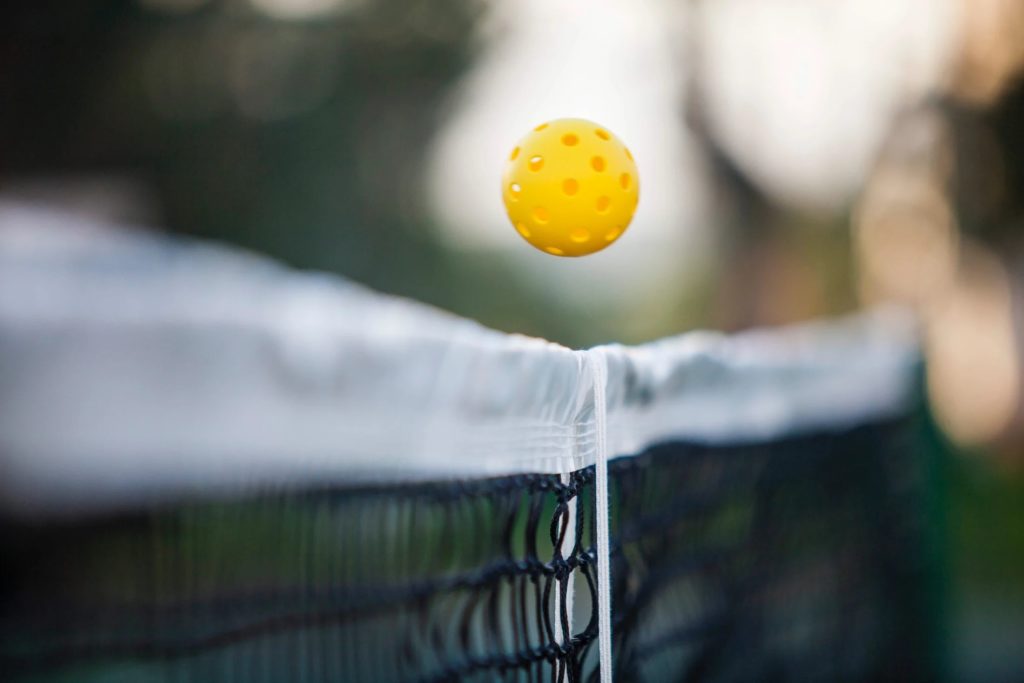
Photo courtesy of thepickler.com
There’s some debate about how this game came to be known for a popular sandwich side. But it is clear that three friends from Bainbridge Island, WA, created pickleball in 1965 to give their bored kids something new to do. So they grabbed simple rackets and a ball, then invented the rules and pickleball was born. As for the name? Apparently, one person started calling it pickleball because the combination of sports involved in creating the game resembled the similarly named pickle boat in crew, which is a mixture of the leftover oarsmen from other boats. But the moniker might also come courtesy of a canine source a pup named Pickles. One of the inventors had a dog with that tart moniker, and the pooch would grab the ball from the game and run off with it.
Pickleball court price and size
A pickleball court is much smaller than the one used for tennis. And if you want, the court can also accommodate multiple sports like basketball and volleyball. But if you’re focusing on pickleball, you’ll need about twenty thousand dollars to construct an entry-level court. The exact cost depends on where you live as regional materials and labor costs vary, explains Carl Schmits, managing director of equipment standards and facilities development at USA Pickleball.
As for the backyard space, you’ll need to allow the minimum for a single twenty by forty four foot court in an area that’s thirty feet by sixty feet. (You’ll need extra square footage if you add a fence and light pole footings.) You can put even more space around your pickleball court to show off your advanced around-the-post shots. Or add room to kick back, rest between matches, or socialize after the game with a cold drink.
Pickleball court add-ons
When it comes to pickleball court frills, you’ll need to shell out a bit more cash. If you want a fence around your court and lighting for night matches, you’re talking an additional four thousand to ten thousand dollars plus installation. “But many people opt not to add a fence since turf or xeriscaping (dry landscaping) around the playing surface can stop wild balls like Velcro,” explains Schmits.
Pickleball court maintenance
Fortunately, once your pickleball court is installed, the maintenance is minimal, say the pros. First, you need to keep the surface clean and free of debris so the ball doesn’t bounce away erratically. After that, the long-term term upkeep of your court depends on the climate where you live.
For example, if you reside in a place with frigid temperatures or many freeze-thaw cycles, the surface may deteriorate more quickly than in warmer parts of the country. And the material you choose, whether asphalt or an acrylic surface with a substrate, will also be a factor. (Asphalt needs more frequent touch-ups.)
Pickleball and the neighbors
Living next door to a pool is kind of awesome since you can probably use it if you’re friends with those neighbors. But listening to a pickleball’s constant clack on the paddle might be too much for some folks to bear.
The bottom line? Consider the potential impact your ball noise will have and the brightness from any lighting you install. (That glare in your neighbor’s window might keep her toddler up at night.) One fix might include planting vegetation around the court to muffle the din.
Pickleball court and its return on investment
Remarkably enough, pickleball courts have unseated golf courses as the most in-demand sports amenity in high-end residential developments and vacation home properties, according to Architectural Digest. Still, the most significant factor when considering a pickleball court on your property, after the initial cost, is whether you’ll earn your money back at some point down the road. According to sport court experts, this investment might offer some ROI and is often a better bet than putting in a pool, which is very high maintenance.
But you must be a massive fan of the sport before pulling the trigger on a pickleball court, says Tate Kelly, a real estate broker with Compass in New York City. “It’s not going to add that much value no matter how popular it gets,” says Kelly. “But if you want one, at least put in a court that’ll allow for multiple sports like tennis and basketball.”
Damian Hall, a real estate broker at Blackstream Christie’s International in Greenville, SC, agrees, noting that these courts are more desirable amenities at country clubs and in municipal parks rather than for personal use. “Like a basketball court or putting green, a pickleball court is too niche and won’t lead to good ROI,” says Hall. “I have one property under contract with this amenity, which had very little consideration from my clients’ offer and interest level.”
The post Thinking About Building a Pickleball Court? Here’s What You Need To Know About Adding This Hot Amenity appeared first on Real Estate News & Insights | realtor.com®.
Selecting the Right Homebuyer's agent
 Unlike most other real estate agents, a MABA home buyer's broker never represents both a buyer and seller in the same transaction so you never have to worry whether a MABA agent is really looking out for your best financial interests. A MABA buyer's agent acts as your advocate, real estate educator, advisor and negotiator, always loyal to you and dedicated to helping you find and buy the best home with the best terms at the price and showing you which homes to avoid along the way.
Unlike most other real estate agents, a MABA home buyer's broker never represents both a buyer and seller in the same transaction so you never have to worry whether a MABA agent is really looking out for your best financial interests. A MABA buyer's agent acts as your advocate, real estate educator, advisor and negotiator, always loyal to you and dedicated to helping you find and buy the best home with the best terms at the price and showing you which homes to avoid along the way.
Fewer than one percent of the agents and brokers in Massachusetts meet our high standards.
Whether you are ready to buy now or just beginning your home buying journey, click here to choose a Great Buyer's Agent to answer all of your home buying questions!
"Thanks to our MABA agent's knowledge, analysis, and guidance, when we found our house, we knew it was the house for us. During the negotiation, we felt confident and secure."
Article From: "Jennifer Kelly Geddes" Read full article
Get Started with MABA
For no extra cost, let a MABA buyer agent protect your interests

